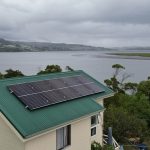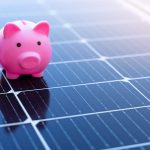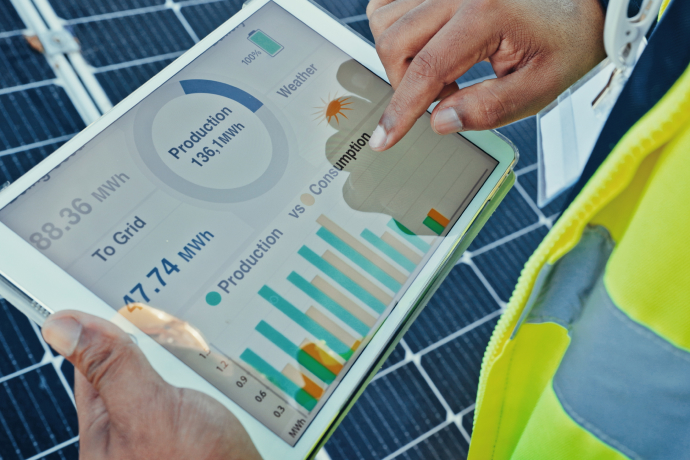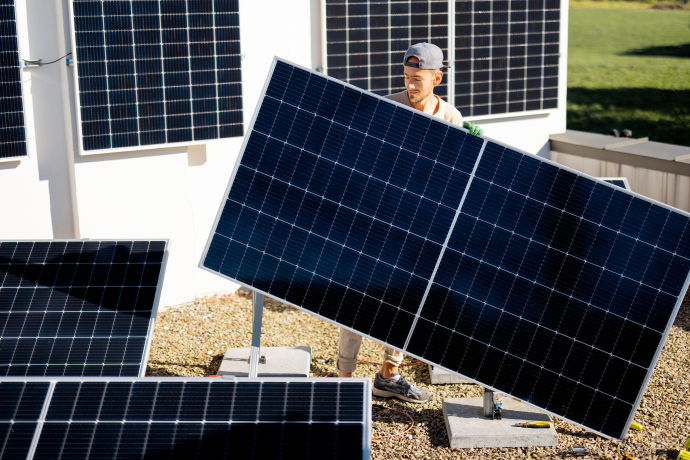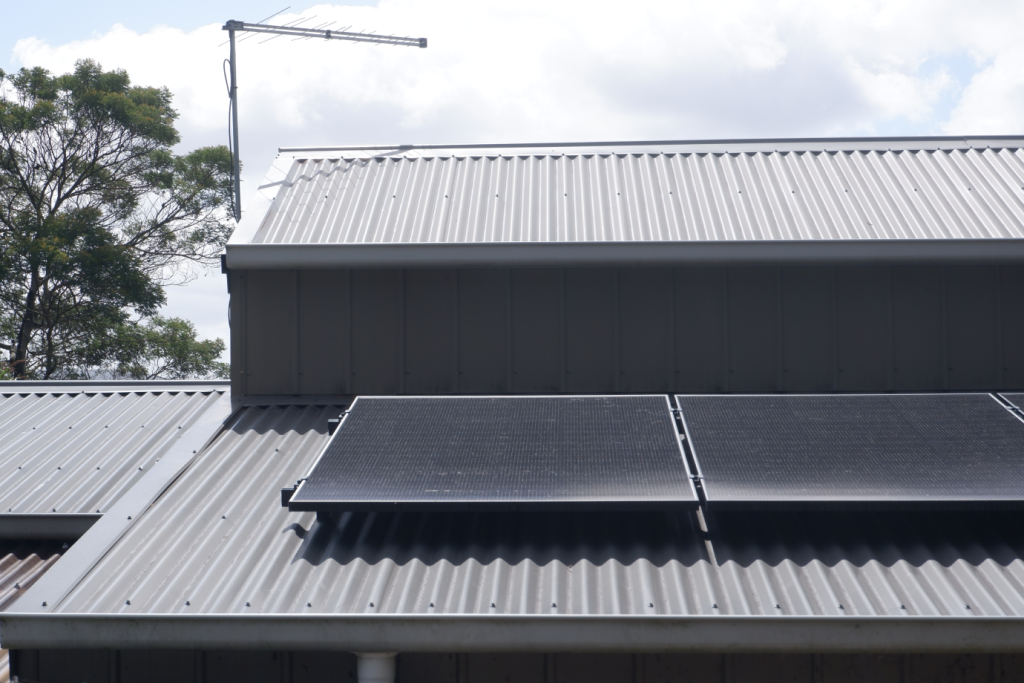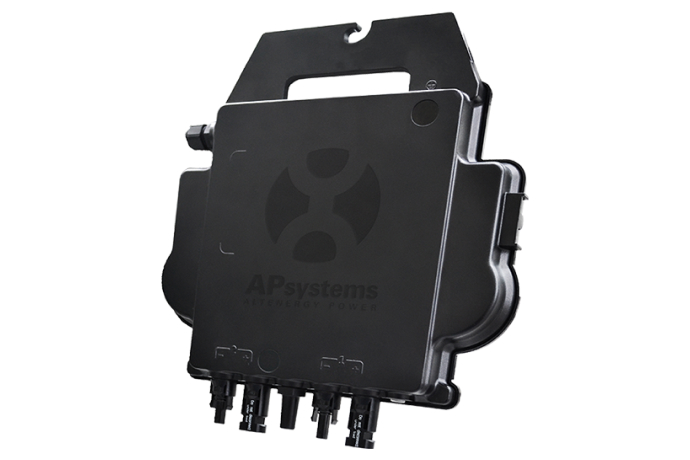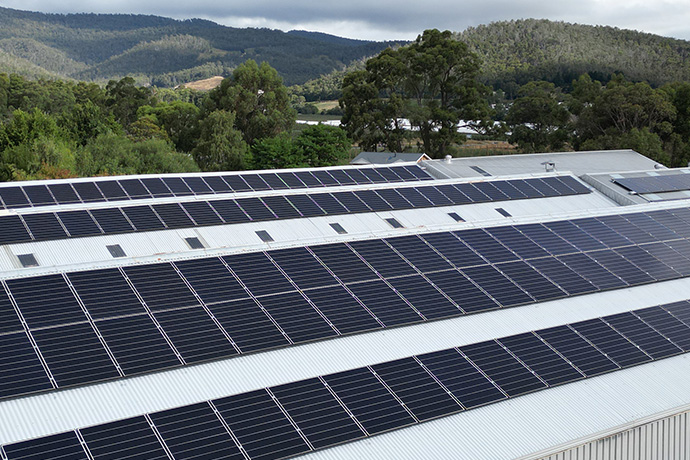
Solar panels can reduce bills and produce sustainable energy but they do lose efficiency over time. This is called degradation and is a natural result of the solar panel’s exposure to UV rays and weather conditions. On average, solar panels have a lifespan of 30 years. The National Renewable Energy Laboratory (NREL) states solar panels and their output degrade at a rate of about 0.5% per year. That means a 20-year-old solar system will operate at about 90% of its original capacity. When making the choice to go solar, it is important to understand solar panel efficiency and degradation to see if they are right for you. We help you understand solar panel efficiency, what it means and how it changes over time.
What is Solar Panel Efficiency?
Solar panels are made up of photovoltaic (PV) cells that convert sunlight into electricity. The panels are an assemblage of the PV cells all integrated into a sturdy framework. The efficiency of the PV cell is measured by the percentage of solar energy it converts to electricity. This is the most commonly used parameter to gauge how efficient solar cells and panels are. The higher the efficiency of the solar panel, the more sunlight will be converted to energy, and vice versa. Low solar efficiency converts less sunshine to energy.

How To Check Solar Panel Efficiency
It is important to occasionally check your solar panel efficiency to make sure they are working at their full capacity. Follow these steps to do a quick health check on your solar system.
- Check energy bills. Keep an eye on your energy bills. These are an excellent way to see how efficient your solar panels are. If your energy bill suddenly increases and there is no other external cause, it may be an indication that the solar panels are starting to degrade.
- Consider the weather. Don’t forget to take into account the weather when checking the solar panel efficiency. Panels may have a lower energy output than usual due to overcast conditions. While solar panels can still be efficient on cloudy days, they tend to operate at about 10 to 25 percent lower capacity than full sun days.
- Use a solar panel monitor. Solar panel monitors report and track solar panel efficiency to see how much energy your solar panels are producing, review your feed-in payments and check the health of the system. Most inverters and batteries come with a monitoring application and there are other apps you can use which offer more advanced and detailed monitoring.
- Conduct shading analysis. The amount of shade your solar panels are subject to can make a big difference to their efficiency. Solar panels need sunlight to produce electricity. Too much or total shading will have a negative effect on energy conversion.
- Inspect solar panels. Make sure your solar panels are inspected at least every two years. Regular inspections will be able to identify if there are any potential faults before they become a major problem that affects their efficiency.
- Compare with the neighbours. Another way to check is to compare your solar system to a neighbour’s system, particularly if it is a similar size. A good way to compare is by checking the total energy in kilowatt hours that your system generates in a day compared to the neighbour’s system on the same day. There is even a website called pvoutput.org where solar system enthusiasts post their solar generation figures to the public forum. If you search a 20km radius on that site you will be able to see how much energy is being generated by solar systems in your area.
- Contact a professional. If you are unsure about the solar panel efficiency, a professional solar panel installer can be an invaluable source of information. They have expertise and knowledge to assess the solar system’s performance and efficiency, detect and resolve any issues.
Solar Panel Efficiency Over Time
Solar panel efficiency over time falls under two umbrellas – historically, how efficiency has evolved over time, and solar panel longevity for customers. We look at both to get a greater insight into the history of solar panel efficiency, and how solar panels perform today.
Solar Panel Efficiency Timeline
In the 1950’s, the first solar panel capable of converting the sun’s energy into power to run everyday electrical equipment was created. For 70 years, solar panel efficiency has continued to improve. These key dates signify some important moments in the evolution of solar panel efficiency.
- 1954. Bell labs invention of first silicon solar panel. These cells had about 1% to 6% efficiency.
- 1960. There is a rapid improvement as Hoffman Electronics creates a solar cell that is 14% efficient.
- 1980. The first thin film cell is developed by the University of Delaware that exceeds 10% efficiency.
- 1985. The Centre of Photovoltaic Engineering creates a silicon cell that is 20% efficient.
- 2019. The National Renewable Energy Laboratory develops the first solar cell with over 39.2% efficiency. These are tandem cells but extremely expensive to produce so only used for specific applications, not including residential or commercial purposes.
- 2021-present day. Tandem cells became viable for production and are now widely used for residential solar systems, raising potential efficiency to 25%. These days some home solar systems can reach efficiencies of about 30%.
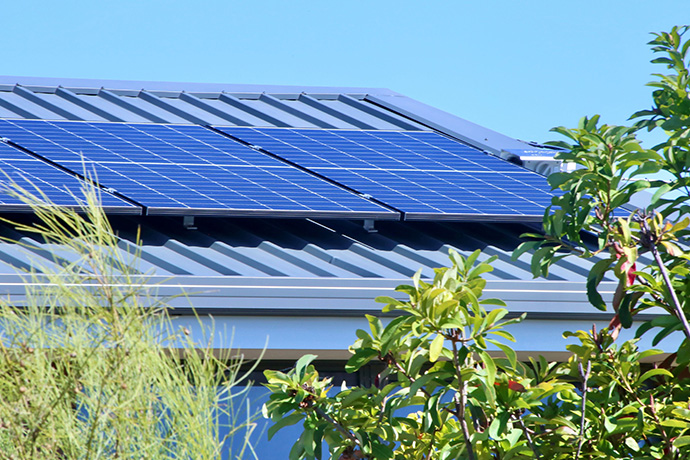
Solar Panel Efficiency and Longevity
Solar panels that are installed on your roof will lose efficiency over time but it is a slow process. Most panels have a yearly degradation rate of 0.5 percent. This gradual loss in power output means that after 20 years, a solar panel’s efficiency is typically expected to be around 90% of its original capacity. The reasons solar panels lose efficiency over time is because of these factors:
- Exposure to ultraviolet (UV) light: Solar panels that are exposed to sunlight and UV light will eventually degrade over time. The UV light degrades the polymers and adhesives that are used in the solar panels and causes damage to other materials like the anti-reflective coating.
- Changes in temperature: Extreme changes in temperature can contribute to the degradation of solar panels. Dramatic temperature changes like heat waves or freezing cold snow can cause the components of the solar panels to contract and expand, leading to cracks and other damage.
- Age-related degradation: Natural wear and tear over the years is a big factor in the decrease in efficiency of solar panels. Age related degradation may show up as corrosion, delamination, hot spots, or decolourisation.
- Potential-induced degradation (PID): When different components of the solar panel operate at different voltages, it is known as PID. This causes voltage leaks and a loss of energy. It is very uncommon but, if it happens, can reduce a panel’s efficiency by 30%.
Factors Affecting Solar Panel Efficiency
When you install your solar panels, you will want them to be as efficient as possible. We look at all the factors that impact solar panel efficiency.
- The amount of sunlight: Solar panels rely on sunlight to produce the highest amount of electricity. Therefore, the amount of sunlight a solar panel receives directly affects its efficiency.
- Panel orientation and tilt: The way the panels are tilted and oriented towards the sun plays a big part in their efficiency. Solar panels must face the correct direction and have a tilt where they are exposed to the highest intensity of sunshine for the largest amount of time. In the southern hemisphere, solar panels should ideally face true north, and vice versa in the northern hemisphere. The tilt of the solar panel is determined by the geographical latitude. For optimal energy efficiency, the best tilt angle should be 15 degrees more than your area’s latitude in the winter, and 15 degrees less than your area’s latitude in the summer.
- High temperature: Solar panels need the sunshine to produce energy but high temperatures reduce the efficiency of solar panels. This is because the high temperatures cause the panels to overheat and become resistant which slows the speed of the electrical current.
- Panel age: High quality solar panels have a lifespan of about 25 to 30 years, but do slowly deteriorate over time, so panel age will impact efficiency.
- Shade and obstructions: Solar panels rely on sunlight to produce electricity, so shading can have a significant impact on their energy efficiency.
- Leaves, snow or debris: Any obstacles like leaves, snow or debris can block sunlight from the panels, reducing solar efficiency. It is important to clear the panels regularly to avoid any debris buildup.
- Type of solar panels: The type of solar panel you choose will impact its efficiency particularly if you live in harsh environmental conditions. High efficiency panels are more costly but do convert more sunlight to energy compared to lower efficiency panels.
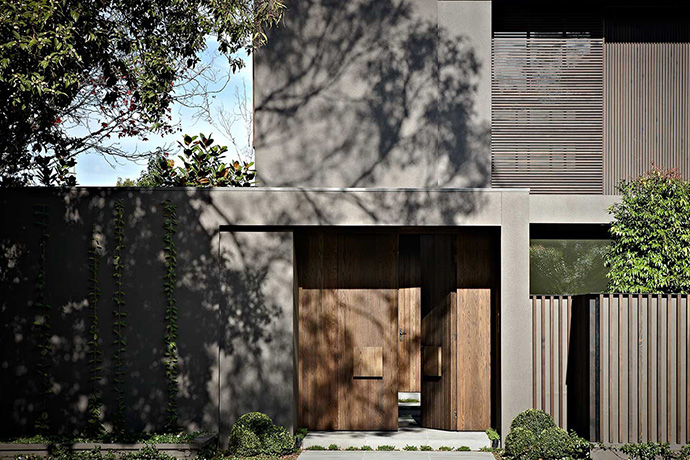
Tips to Improve Solar Panel Efficiency
Enhancing solar panel performance is the key to getting the most of your solar system investment. Here are some tips on how to improve solar panel efficiency and obtain the best possible output of electricity.
Before installation
- Choose higher efficiency solar panels: The higher the efficiency of the solar panel, the more energy it will produce. The three highest efficiency solar panels are monocrystalline silicon, polycrystalline silicon, and bifacial panels. Monocrystalline silicon operates at about 20 to 22% efficiency, and polycrystalline silicon at 15 to 17%. Bifacial panels produce solar from both sides of the panel and can create up to 30% more production than traditional panels when placed on a reflective roof. Alternatively, If you install a polycrystalline solar panel system, efficiency will be 13 to 16%, due to the lower quality of the material. If you are looking for efficiency and higher electricity generation, do not compromise on the quality of the panels.
- Get professional installation: Choose professional installers as installation is one of the most important elements of the solar panel effectiveness. Professional installers with the correct credentials will ensure the panels have the right orientation and tilt. They will be able to advise you on any structural issues on your roof or obstructions to sunlight and find a solution so that your panels can be the most efficient possible. They will also be able to advise you on the type of panels you need for maximum efficiency, given your location and roof type.
After installation
- Regular cleaning and maintenance: Solar panels that are regularly cleaned and maintained are more energy efficient. Regular cleaning removes dirt and debris which can reduce energy output. How often you clean them depends on the location and environment but usually once every 6 to 12 months is ideal. Schedule maintenance for every 1 to 2 years to check the system for any signs of damage can detect any issues that may affect the performance of the solar panels. If the solar system energy output has drastically reduced, an additional check will be needed.
- Monitor your system to make sure it is being energy efficient: With a solar monitoring system, you can actively monitor your system’s efficiency. Monitoring systems ensure your system is operating at peak efficiency and notifies you of any critical information.
- Keep the inverter cool: The inverter is responsible for converting the DC electricity generated by solar panels into AC electricity that can be used in the house. When the inverter overheats, its efficiency is reduced, so keep the inverter cool to ensure maximum efficiency.
- Optimise energy consumption: By optimising your energy consumption, you can help maximise solar panel efficiency. Run high energy consuming appliances during daylight hours where you can directly use the solar energy the panels are producing. You could also invest in smart home technology that allows you to remotely run appliances during peak sunlight hours if you are not at home.
- Check for shadows: Keep an eye out for shadows that may appear during the day and block sunlight getting to the roof. This could be trees that have now grown or a new development near you that suddenly blocks the sun. If you are aware of shade on the solar panels, you can work out how to compensate for it.
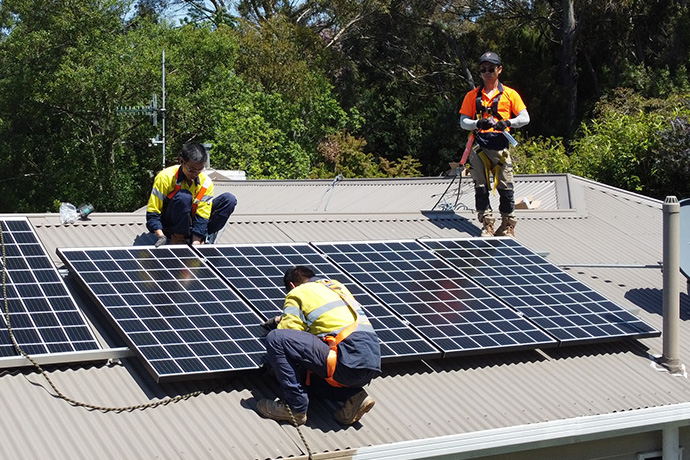
Signs Solar Panels Need Replacing
With proper maintenance, regular cleaning and favourable weather conditions, solar panels should last for 25 to 30 years before they need replacing. Eventually there will be signs it is time for an upgrade. If performance and output decrease, it is probably time for a change. Slight reduction each year is expected but if your energy bills are suddenly increasing, it is time to contemplate replacement. Of course, if your solar panels are physically damaged by extreme weather or an accident, they will need to be replaced. Similarly, if you notice any burn marks on the panels that could be a result of lamination and corroded panels, they will not be operating efficiently and you will need to think about getting a new system.
Solar panels last for decades but solar panel efficiency will decrease over time. When investing in a solar system, it is essential to understand solar efficiency to choose the best solar system for your needs.
We have explained everything you need to know about solar panel efficiency and how it is impacted over time. Our tips will help you improve solar panel efficiency and understand the signs when it is time for a solar system upgrade. For further information, the team at TSS are the experts in solar panels and are happy to answer any questions to help you find the best system for your needs.

